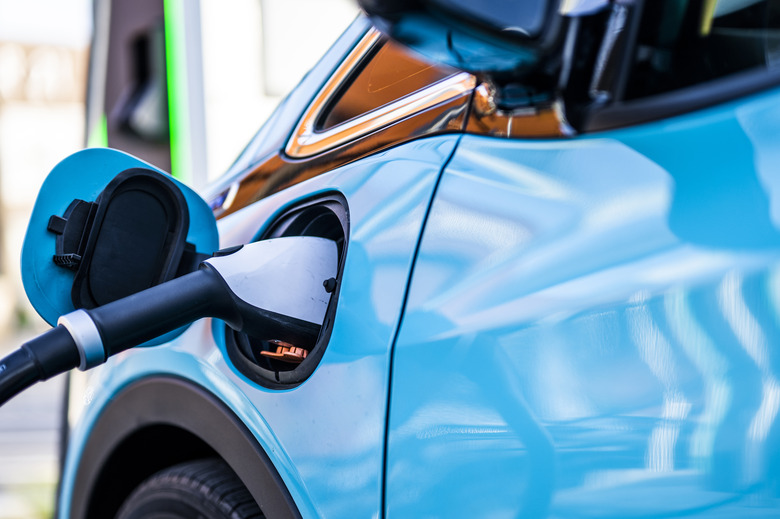How To Wire The Nema 6-30R
We may receive a commission on purchases made from links.
If you're thinking of purchasing an electric vehicle, you'll need to install a receptacle to charge it, and the Nema 6-30R is the one most commonly used. It's designed for use on a 240-volt circuit, and it's rated for a maximum current of 30 amps. This receptacle is also used to power air conditioners, electric stoves, and dryers, and it's used in conjunction with a Nema 6-30P plug.
The Nema 6-30R receptacle is configured with two horizontal slots and a dome-shaped ground-pin hole above or below the other two depending on how you install it. It has three terminal junctions on the back; two are for hot wires, and one is for a dedicated ground wire. There's no junction for a neutral wire, so you wouldn't use this receptacle for any 240-volt appliance that also needs 120-volt power to operate a light, clock, or similar accessory. You can buy a Nema 6-30R receptacle at Home Depot or any other home supply outlet.
Running Cable to the Receptacle
Running Cable to the Receptacle
You need 10/2 cable to wire a Nema 6-30R outlet. The designation means the cable has two 10 AWG conductors and a ground wire. AWG refers to the wire gauge (it stands for American wire gauge). Ten AWG is heavier than the 12 AWG cable you use to wire most 120-volt circuits. Keep in mind that heavier cables are stiffer and a little more difficult to fish through your home's framing than lighter ones.
Two of the wires in the cable are coated with insulation, and one is bare. The coated wires may be black and red or black and white, and they each connect to one of the breakers in a dual 30-amp breaker set, which you must install in the electric panel. The bare wire is the ground wire and connects to the ground bus in the panel. If you don't have any experience installing circuit breakers in the panel, it's safer to have an electrician do this part of the job.
How to Wire a Nema 6-30R Receptacle
How to Wire a Nema 6-30R Receptacle
Like all receptacles, the Nema 6-30R must be installed in an approved electric box securely fastened to a wall stud. You feed the cable through the back of the box and tighten the cable clamp on the box to prevent the cable from moving. If the wire is already connected to a breaker in the panel, make sure the circuit is turned off before you do any wiring.
The receptacle has three inlet holes, each with its own screw. Two of the screws are brass, and one is green. Using a wire stripper, remove enough insulation from the coated wires to feed into the holes (there's a marking on the back of the cover plate that tells you how much to strip). Feed each of the insulated wires through a hole with a brass screw (it doesn't matter which one) and the bare wire through the hole with the green screw. Tighten the screws securely with a screwdriver to hold the wires.
Installing a Nema 6-30R Receptacle Outdoors
Installing a Nema 6-30R Receptacle Outdoors
If you're going to use the receptacle to charge an EV, you'll want it outside. In that case, you'll need to bury the cable that feeds it, so you need 10/2 UF-B cable, which has a plastic waterproof sheathing. The depth you have to bury it is generally 24 inches, and any part that is exposed, such as the part that runs along the side of the house or up a pole to the receptacle, must be enclosed in conduit.
The electrical box in which you install the receptacle must also be waterproof. It needs to have a weatherproof design and a cover. Use a box designed for a 30-amp receptacle to be sure you have enough room for the oversized wires.
